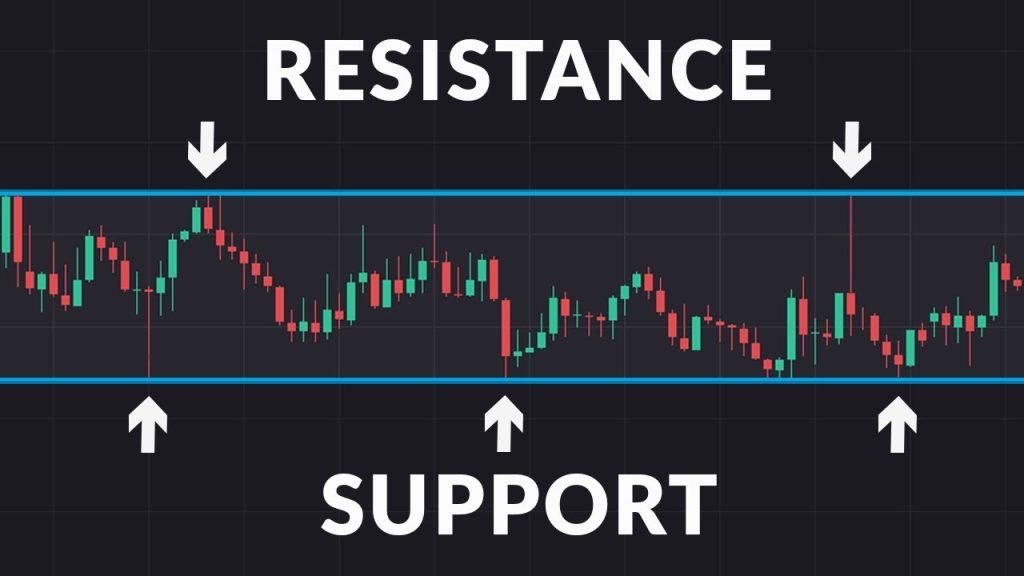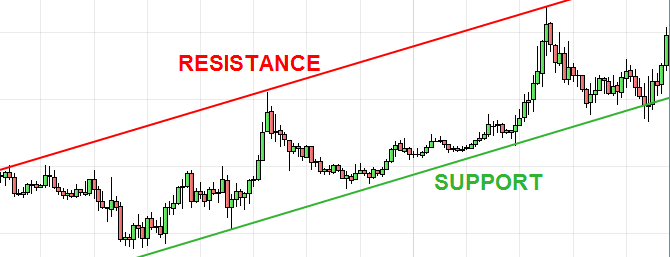Your cart is currently empty!
Understanding Support and Resistance or Pivot Points in Technical Analysis
Support and Resistance or Pivot Point are fundamental concepts in technical analysis used to identify price levels on a chart that can act as barriers, preventing the price of an asset from being pushed in a certain direction. These levels are crucial for traders because they help in making informed decisions regarding entry and exit points in the market.
Why use Support and resistance or pivot points calculator ?
Use our Support and Resistance Calculator to easily determine pivot points and identify key support and resistance levels (R1, R2, R3, S1, S2, S3) for your trading strategy.
What is support and resistance?
In a downtrend, prices fall because there is an excess of supply over demand. The lower prices go, the more attractive prices become to those waiting on the sidelines to buy the shares. At some level, demand that would have been slowly increasing will rise to the level where it matches supply. At this point, prices will stop falling. This is support.
Support can be a price level on the chart or a price zone. In any event, support is an area on a price chart that shows buyers’ willingness to buy. It is at this level that demand will usually overwhelm supply, causing the price decline to halt and reverse.
Resistance is the opposite of support. Prices move up because there is more demand than supply. As the prices move higher, there will come a point when selling will overwhelm the desire to buy. This happens for a variety of reasons. It could be that traders have determined that prices are too high or have met their target. It could be the reluctance of buyers to initiate new positions at such rich valuations. It could be for any other number of reasons. But a technician will clearly see on a price chart a level at which supply begins to overwhelm demand. This is resistance. Like support, it can be a level or a zone.
Once an area or “zone” of support or resistance has been identified, those price levels can serve as potential entry or exit points because, as the price reaches a point of previous support or resistance, it will do one of two things: bounce back away from the support or resistance level, or violate the price level and continue in its prior direction—until it hits the next support or resistance level.
The timing of some trades is based on the belief that support and resistance zones will not be broken. Whether the price is halted by or breaks through the support or resistance level, traders can “bet” on the direction of price and can quickly determine if they are correct. If the price moves in the wrong direction (breaks through prior support or resistance levels), the position can be closed at a small loss. If the price moves in the right direction (respects prior support or resistance levels), however, the move may be substantial.
The Basics of Support and Resistance or Pivot Points
Support and resistance can be found in all charting time periods; daily, weekly, and monthly. Traders also find support and resistance in smaller time frames like one-minute and five-minute charts. But the longer the time period, the more significant the support or resistance. To identify support or resistance, you have to look back at the chart to find a significant pause in a price decline or rise. Then look forward to see whether a price halts and/or reverses as it approaches that level. As has been noted above, many experienced traders will pay attention to past support or resistance levels and place traders in anticipation of a future similar reaction at these levels.
Technical analysis is not an exact science, and sometimes the price will dip below support levels or reverse before it gets to the prior support level. The same is true for resistance: Price may reverse before it gets to the prior resistance level or break above it. In each case, flexibility is required in interpreting these chart patterns. This is why support and resistance levels are sometimes referred to as zones.
There is nothing magical about these price levels. It is simply that many market participants are acting off the same information and placing trades at similar levels.
Most experienced traders can share stories about how the price of an asset tends to halt when it gets to a certain level. For example, assume that Jim was holding a position in stock from March to November and that he was expecting the value of the shares to increase.
Let’s imagine that Jim notices that the price fails to get above $39 several times over several months, even though it has gotten very close to moving above that level. In this case, traders would call the price level near $39 a level of resistance. As you can see from the chart below, resistance levels are also regarded as a ceiling because these price levels represent areas where a rally runs out of gas.

Support levels are on the flip side of the coin. Support refers to the price level on a chart where equilibrium is reached. This means that demand has increased to match supply. This causes the decline in the price of the asset to halt; therefore, the price has reached a floor. As you can see from the chart below, the horizontal line below the price represents the price floor. You can see by the blue arrows underneath the vertical line that the price has touched this level four times in the past. This is the level where demand comes in, preventing further declines. This is support.
Trendlines
The examples above show that a constant level prevents an asset’s price from moving higher or lower. This static barrier is one of the most popular forms of support/resistance, but the price of financial assets generally trends upward or downward, so it is not uncommon to see these price barriers change over time. This is why the concepts of trending and trendlines are important when learning about support and resistance.
When the market is trending to the upside, resistance levels are formed as the price action slows and starts to move back toward the trendline. When the is moving against the prevailing trend, it is called a reaction. Reactions can occur for a large variety of reasons, including profit taking or near-term uncertainty for a particular issue or sector. The resulting price action undergoes a “plateau” effect, or a slight drop-off in stock price, creating a short-term top.
Many traders will pay close attention to the price of a security as it falls toward the broader support of the trendline because, historically, this has been an area that has prevented the price of the asset from moving substantially lower. For example, as you can see from the Newmont Corp. (NEM) chart below, a trendline can provide support for an asset for several years. In this case, notice how the trendline propped up the price of Newmont’s shares for an extended period of time.

On the other hand, when the market is trending to the downside, traders will watch for a series of declining peaks and will attempt to connect these peaks together with a trendline. When the price approaches the trendline, most traders will watch for the asset to encounter selling pressure and may consider entering a short position because this is an area that has pushed the price downward in the past. To be a valid trendline, the price needs to touch the trendlines at least three times. Sometimes with stronger trendlines, the price will touch the trendline several times over longer time periods. Also, in an uptrend, the trendline is drawn below the price, while in a downtrend, the trendline is drawn above price.
The support/resistance of an identified level, whether discovered with a trendline or through any other method, is deemed to be stronger the more times that the price has historically been unable to move beyond it. Many technical traders will use their identified support and resistance levels to choose strategic entry/exit points because these areas often represent the prices that are the most influential to an asset’s direction. Most traders are confident at these levels in the underlying value of the asset, so the volume generally increases more than usual, making it much more difficult for traders to continue driving the price higher or lower.
Support and Resistance Calculator
Support

Download The Financial Calculator App
Discover all the incredible features of our app designed to enhance your experience. From intuitive tools to unique services tailored for your needs, the app offers endless possibilities. Don’t miss out—click the link below to learn more and see how it can make a difference in your life today.

Whether you’re a seasoned investor or just starting out, our financial astrology tools can be tailored to your specific investment goals. Gain valuable insights to achieve your financial aspirations.
Address
1301, 13th Floor, Skye Corporate Park, Near Satya Sai Square, AB Road, Indore 452010
+91 9669919000
© All Rights Reserved by RajeevPrakash.com (Managed by AstroQ AI Private Limited) – 2025